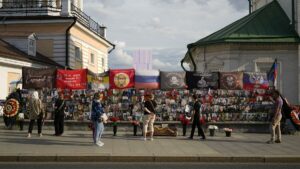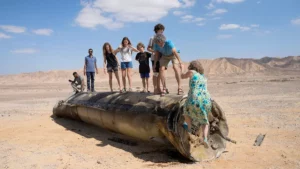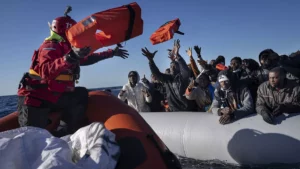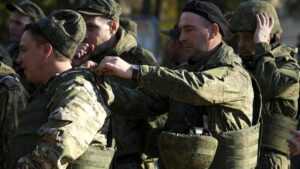“The Situation is Difficult.” Ukraine Sent Tanks on the Offensive and Pushed Back the Russian Army by 6 Kilometers

The counteroffensive of the Armed Forces of Ukraine, which has been in preparation for more than six months and delayed for almost two months, seems to have finally started.
Armed with Western equipment, including German Leopard tanks and British Challenger and French Leclercs, the Armed Forces of Ukraine have switched to “offensive operations in some areas,” Ukrainian Deputy Defense Minister Anna Malyar said on Monday.
According to her, the Bakhmut direction remains the epicenter of hostilities. “There we are moving on a fairly broad front. There is success. We occupy the dominant heights, ”Malyar said.
The fighting is indeed taking place as part of an ongoing counter-offensive, Western officials told The Economist . According to one of them, who is familiar with the situation at the front, Ukrainian troops advanced 5-6 kilometers near the villages of Novodonetsky and Velyka Novoselka, located on the western outskirts of the Donetsk region.
On the morning of Monday, June 5, the Armed Forces of Ukraine were already in Novodonetsk, a Ukrainian source told the magazine.
The commander of the Vostok battalion, Alexander Khodakovsky , said that for the first time in the hostilities of the Armed Forces of Ukraine, Western tanks were involved – Leopard 2 were seen near Novodonetsk as part of a group of 30 armored vehicles.
On Monday night, the Russian Ministry of Defense announced a “large-scale offensive” in five sectors of the front with the aim of “breaking through” the Russian defense, and in the afternoon stated that “the enemy was driven back to their original positions.”
But in reality, “the situation is difficult,” Khodakovsky notes : the Armed Forces of Ukraine found “weak spots”, threw additional forces into battle and were able to “catch on” to Novodonetsk
According to Malyar, the advance in the Bakhmut direction was 1.6 kilometers. At the same time, Ukrainian troops are making an attempt to break through the defense line in the Zaporozhye direction, in the area of the Vremevsky ledge to reach the coast of the Sea of Azov, Vladimir Rogov, head of the Zaporozhye public movement “We are with Russia,” told RIA Novosti .
Z-military correspondents simultaneously note that the onslaught of the Ukrainian army has doubled. If earlier, a platoon of tanks was used to support the reconnaissance of the Armed Forces of Ukraine, now it is one to two tank companies (10-16 tanks). They are supported by several dozen MaxxPro armored vehicles and light HMMWVs, as well as a significant number of M113 light tracked armored personnel carriers with trailers containing M58 Mine Clearing Line Charge (MICLIC) demining charges, the Military Chronicle lists.
The start of the Ukrainian offensive, if indeed it is, almost coincided with the Allied landings in Normandy in 1944. Ukraine was “very well prepared” for it, Mark Milley, chairman of the US Joint Chiefs of Staff, told CNN . He had just arrived in France for the June 6 celebration of the 79th anniversary of the landings. “They [Ukrainians] are waging a war that threatens the very existence of Ukraine and is of great importance for the rest of the world — for Europe, certainly for the United States, but also for the entire globe,” Milley said. “The United States, European allies and countries around the world have provided Ukrainians with training, ammunition, advice, intelligence, etc.”
Russia has built extensive fortifications along the front line and in the path of a possible advance of Ukrainian forces: layered defense, including anti-tank ditches and “hedgehogs”, minefields, “dragon’s teeth”, rows of barbed wire and zigzag trenches (to be able to fire on the advancing under multiple angles). “What Russian troops are really good at is building field engineering structures,” admits Billy Fabian, a former Pentagon strategist and US Army officer (quoted by The Wall Street Journal).
But fortifications will help repel an attack only if they are able to be held by effective units that quickly respond to changes in the combat situation, military experts say. Russian units are now mostly manned by poorly trained and well-endowed reservists, although there are many of them, and this is what the command hopes, said Scott Boston, senior military analyst at Rand Corporation.
The unit still needs to be supplied with ammunition, and Ukrainian shelling of Russian depots and supply routes is precisely designed to deprive the enemy of the advantage that superiority in manpower and equipment gives him, retired Lieutenant General Ben Hodges, a former commander of US forces in Europe, told WSJ.
The Armed Forces of Ukraine do not need to break through the Russian defenses along the entire front, most likely they will concentrate their efforts in several places, Hodges believes: “They need to make a deep breakthrough in two or three areas in order to isolate Crimea. I guess they will gather superior forces in a certain place.”
Source : The Moscow Times





